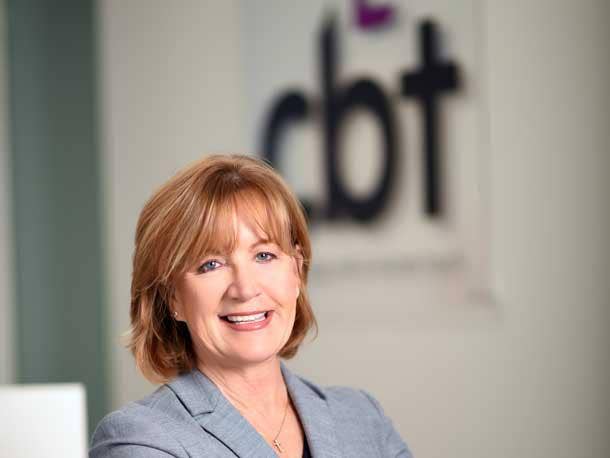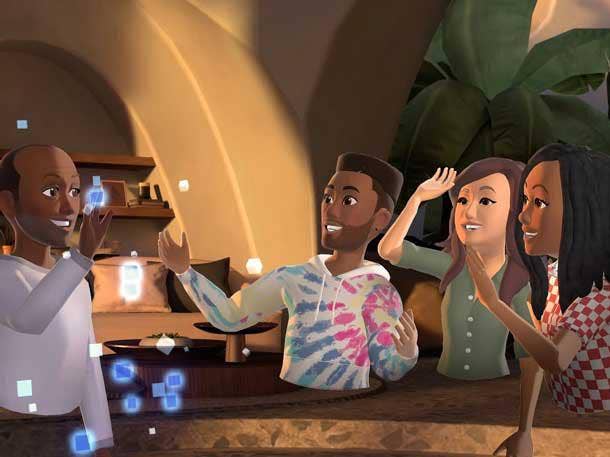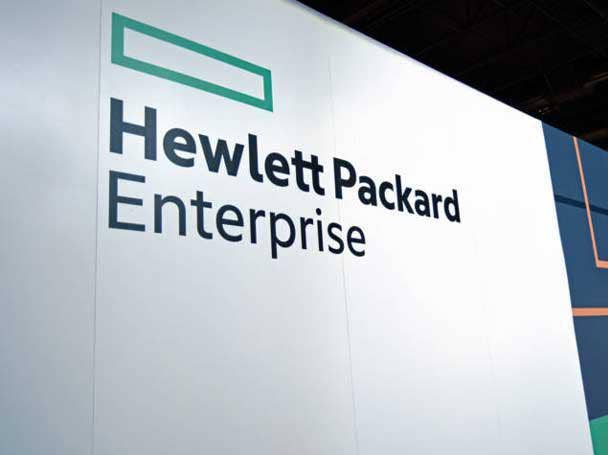CBT CEO Kelly Ireland: XR ‘Absolutely’ A Channel Opportunity
‘Is there an opportunity in the channel? Absolutely,’ CBT CEO Kelly Ireland tells CRN. ‘I've been espousing this for two years, if not longer.’

Extended reality – a catch-all term including virtual reality, augmented reality, mixed reality and the metaverse – is “absolutely” an opportunity for channel partners to add revenue and better service customers as long as they invest in hiring the right people and understanding this emerging technology.
That’s according to Kelly Ireland – founder, CEO and chief technology officer of Orange, Calif.-based CBT – a member of CRN’s 2022 Solution Provider 500. In an interview with CRN, Ireland talked about the ways her company has invested in extended reality and introduced products to help customers from a variety of industries.
“Is there an opportunity in the channel? Absolutely,” Ireland told CRN in a recent interview. “I've been espousing this for two years, if not longer.”
[RELATED: 5 COMPANIES THAT ARE BUILDING THE METAVERSE]
She continued: “The 'but’ is, you have to invest. Because if you don’t understand it, it’s not like IT. You don't take hardware and software and put it together. Everybody is approaching it that way and it doesn’t work because there are way too many other factors included. So you have to do your homework. You have to invest. You have to get the right people.”
For CBT, the right people means bringing in employees with experience in industrial operational technology (OT), including control system engineers and mechanical engineers.
Through its extended reality practice – and offerings from partners including RealWear and Guardhat – CBT has added services that save customers money from having to fly out engineering specialists to fix machines or trainers to educate workers. She’s improved worker safety with wearable devices equipped with radiation detection.
In one construction company’s case, she delivered an augmented reality (AR) product that feeds information into a tablet computer so that construction workers don’t dig and accidentally hit underground pipelines, a common error that can cost millions of dollars.
“You're saving millions (of dollars) right there because you’re not going to have the accidents of pulling up electrical, water, gas pipes,” she said. “It's worker safety as well as not incurring costs that you shouldn’t incur.”
Here’s what else Ireland had to say about her company’s investment in extended reality.

Do you see an opportunity for your business in metaverse and extended reality?
I would say there's definitely opportunity right now. And I’ll tell you – from our viewpoint – different levels, depending on what you're talking about. Metaverse, that’s a magic word that's out there. Everybody’s talking about it because it's popular. … I can tell you real life cases that we have deployed.
And here's the difference that we’re seeing. Is there an opportunity in the channel? Absolutely. I've been espousing this for two years, if not longer. … But – there is a 'but’ – the 'but’ is you have to invest.
Because if you don't understand it, it’s not like IT. You don't take hardware and software and put it together. Everybody is approaching it that way and it doesn’t work because there are way too many other factors included.
So you have to do your homework. You have to invest. You have to get the right people.
CBT hired OT (operational technology, which includes industrial equipment monitoring hardware and software) people because OT culture is distinctly different from IT. It is best to get it directly from the source (OT side) as those resources are entirely different than IT resources.
That is the only way to approach this, and I don't care what anybody says. That is the only way to successfully approach this.
But what we're being able to do is – you look at remote mentor, but take it even a step farther, like remote inspections.
We're doing remote inspections from Finland to Texmark Chemicals (a petrochemical customer of CBT), and they’re not having to fly in.
They're being able to go through whatever process it is that they need to observe and see upfront. We’re able to deliver that to them with wearables, with a multitude of extended reality technologies vendors like RealWear.
There is worker safety. There is remote mentor. There is frontline workers supervision. … Connected worker, process transformation of all types. It doesn't matter what the industry is.Y
We went to Texmark. We spent almost six years there, now, vetting out all of this stuff and working with all the OEMs (original equipment manufacturers) and ISVs to figure out – how does this go together?
We learned seat of our pants because that's what everybody was doing. But the more we looked at it … this is fun. My whole team thinks this is so much fun. So much more fun than IT by itself.
So much more fun because – here's the difference. Rob Schaeffer is my president. He’s the one that looked at it, and he goes, ‘Here's the difference: We’re now being able to see up front and personal(ly) what the solution does, its outcome and how it contributes to the company.
When you’re doing IT into a data center, you know it’s doing something, but you don't really know and you don’t know the impact.
We're watching frontline workers. We’re watching ROI (return on investment) on the backside, whether it's the safety of the people, or it’s increase of production, reduction of costs, it's all of the above – doesn’t matter what it is.
And what we found is it goes completely across industries. It does not matter. And especially when you can bring customers into the ROTF (Refinery of the Future) environment and let them try it for themselves. Their minds explode with ideas.
So when we go out to Texmark, we put a RealWear device on their (users’) heads, any kind – it can be a HoloLens, it can be whatever it is that we're trying to showcase – they put it on, it’s like their mind explodes.
They go back into what they're doing back at their company and go, 'This is what we could use that for.’ And the art of the possible starts generating internal ideas of how it can apply to their needs, goals, etcetera. It’s awesome to see, but it's the reality of showing them exactly what can happen.
And you've heard of POC (proof-of-concept) purgatory. We actually have clients that are coming back to us that had started with somebody else and said, 'Well, we’ve got to go through and see if this works.’
Well, it doesn't work. And so now they’re coming back to us going, 'We know you've done it.’ Because we could show that we’ve done it.
The big thing is getting past that hurdle now of, 'But what about POC purgatory?’ POC purgatory is caused by trying to deliver a solution without first understanding the problem … and required ROI.
The industry originally approached this market with a 'Here's a widget I want you to buy’ mentality. Or, 'Here’s software I want you to buy.’ Not, 'Here's a solution I want to bring you that provides an outcome.’ Because that is the only way to address any environment this is needed in. The only way. This industry, this environment, that’s the only way to do it to be successful.

Are you seeing real-world outcomes today?
I’ll give you some generalities. Think of during COVID, or you could look at it now with the way the economy is going – airline flights are astronomical, more limited than ever before and recently unreliable … What if, instead of flying somebody in to take care of a special machine, you get an engineer or a technician of an acceptable level and that person can be walked through it?
Just like a doctor with a procedure or health care worker with a doctor on the line watching them go through a specific procedure with expert guidance. … We’ve (also) integrated a dosimeter (radiation detection device) reading into a wearable device. Instead of a frontline worker simply having a beeper style apparatus to notify of the radiation level, they can actually see what level they’re at as they're walking around a nuclear facility.
We have created augmented training programs where employees can go into a shell structure of a building that has open studded walls with an electrical conduit or plumbing pipes and fixtures. The augmented reality shows color-coded hot or cold water running in the appropriate directions through the plumbing fixtures and pipes. Electrical shows the step downs of power from external sources into a home down to a power outlet or appliance.
And it's teaching these people what type of tools are used, why they’re used, in what situations, why it's applicable, what it does. So it’s been able to augment training.
So we're seeing … training, supervision, being able to not have to have specialists in certain areas and just have those be virtually connected and be that remote mentor, teacher, trainer, expert - a vast array of choices to provide a multitude of levels of support.
We called it 'toe dipping’ for two years. It's been toe dipping. Everybody’s like, 'Yeah, I want to try it. But, oh, so many people are in POC purgatory. And they didn't achieve it. And nothing ever came of it.’
And we're like, 'Nothing ever came of it because you approached it … as buying a product – hardware, software or a combo – and not as a tried and true solution.’ … And they’re like, 'Yeah.’
And I go, 'We don't approach it that way.’ You have to approach it as – What specific issue are you trying to address? What outcome … do you need to achieve?
Don't talk about product. Don’t talk about a wearable. Don't talk about a phone. Don’t talk about an iPad or a laptop or tablet. And don't talk about a software. Talk about what the problem is. And if you start from there and work back, then you bring them exactly what they need.
And that's what our approach has been. It’s like building software. It's the same approach as building software. You take the agile approach. And that’s why, right now, we don't bring any OEMs or ISVs in the discussion with us – because they’re going to sell their widget. We don't want a customer buying it unless it’s the right application.

So for extended reality to grow, it sounds like extended reality needs the channel?
It needs to have a channel (motion). … But to be successful (as a partner), you have to invest or else your customer has to suffer for the next two years while you use them as a guinea pig to get through. … We can get in and at least get an audience and have a conversation because we know what we're talking about. We’ve lived it. We've lived the misery of testing the hardware with the software, making sure it works, making sure the environment can support it, etcetera.
We can hit on bullet points that they're like, 'Wait a minute, how do you know that?’ Because we went through the same thing that you probably are going through now, but we did it three years ago and we came up with ways to get past it – whether it be bringing on resources that know it, bringing in different kinds of services or different software, going out there and finding software. … We had a client, a large construction company. We said, 'What is it that you’d love to be able to do if you could just snap your fingers?'
And they said, 'We would like to have X-ray vision to see pipes underground. And we went, 'OK, let's see what we can find out.’
We actually delivered it to them based off of an iPad with data that is gathered from different resources that come in and a virtual GIS (geographic information system) program.
They can just hold the tablet there and it shows you, based on an integration of multiple records and software – where the underground infrastructure is located and at what depth within six centimeters. You're like, 'What?’
And they said, 'You're saving millions (of dollars) right there because you’re not going to have the accidents of pulling up electrical, water, gas pipes.’ It's worker safety as well as not incurring costs that you shouldn’t incur.

How new is that service?
That one’s fairly new because when you look at this industry, even with virtual GIS and everything else, everybody’s just getting to that point of putting all the pieces together, still tweaking a couple of things to make sure it's right.
So very new on that one. But the customer – we went out and did it and they just went, ‘What?’
And it’s a repeatable service you can sell to others?
Totally repeatable. But it includes a lot of people. (For the construction augmented reality service), you have to have data coming from 8-1-1 (a phone number to prevent damage to underground utilities during excavation work). You've got to have all these different resources that you bring together. And you’ve got to have the channel partner who actually knows all of this, understands and has the personnel on staff that actually can at least have oversight to say, 'Yes, this is correct. Yes, that data looks to be good.’
You bring it in, you test it out yourself to go, 'OK.’ I call it 'eating our own dog food.’ We do it with all products we offer to customers. We test it out.
We try it out at Texmark. It's good to have a production plant so you can go do it. Just like digital twin. The same thing. I love digital twin. I’m just fascinated with it and everything that it brings to bear.
But the thing is being able to show a customer, 'OK, here's a digital twin of this chemical tower, production tower. Here’s where it is. Oh, by the way, when we first did a … scan of it … and they matched it up with what the record said, it wasn't even close.’
And that's one of the first things you do is you take it, you look at it, and you go and look at what your paperwork says for your audit trail. And it’s like – not even close. That data was not kept up to date. So then you go through the process of fixing it so that it's identical. And then you make sure from that point on that it updates accordingly as you make changes … that actually change the record in the digital twin.

What made you decide to invest in an extended reality practice?
It was a series of things. I was working in parallel – two projects with HPE (Hewlett Packard Enterprise), we were working in parallel.
I was working with the oil and gas team. And we were looking at – it had something to do with the data and the gathering of data and information coming off of OT product.
And then this other project was kind of going in the same direction. And we came together and integrated together.
And I started this one – and the reason they reached out to me is because I was known as the reseller that actually invested. I had created a B2B (business-to-business experience) for Ford Motors that was integrated with HPE. And so they took it off of that. That rep(resentative) went over to the oil and gas vertical and he said, 'Kelly, here's my idea. We are looking to gather some partners to deliver a total solution. Do you want to be involved?’
And I looked at it and went, 'OK, it looks like that's the lane it’s going down. Yeah.’

What are your thoughts on technology adoption cycles?
I’ve learned throughout my career that when somebody announces something, I need to wait six to 12 to 18 months. It is what it is.
I would say in my experience so far, especially with RealWear, RealWear did their homework. They really did. It's why we’ve stuck with them.
We check everything that comes out. We check every wearable – doesn't matter what it is, because we want the best of the best in each of the categories.
Those guys did their homework. And it's a matter of – they were first to market. I would call them first to market for what they did. So they weren’t a follow-on and they didn't have to hurry and ramp and catch up. They led. So with them, I watched but I was very enticed by what I saw. And I really loved the mission behind it.
The same thing with (worker safety and productivity platform provider) Guardhat – we actually integrated Guardhat onto RealWear, and so we have the best of both worlds there.
Guardhat is more looking at it as a software play. But the same thing – looking at the reason that it was created. When I met with (Guardhat CEO) Saikat Dey and talked to him about his software, his passion behind what he was doing was all about getting an extra 5,000 people back home with their families instead of having them die in the workplace.
And when you looked at his passion behind it and the multiple years they'd already put in – the millions (of dollars) they’d already put into it – to me, that was, you're doing this for the right reason and it will be successful because of that in some shape or form.
So we look at it that way. We try to stay away from the shiny object. Really give it a little bit of time, make sure the company's financially feasible, has the right backers.
But you have to do that, especially in this market, because 20 a day are coming out with, 'We can do this, and we can do that, we can do everything.’
And you're looking at it going, 'If we spent all our time vetting every one of those, we’d never get anything done. And we would deliver nothing.’
We’ve found a really good portfolio of who's who in the zoo and who’s doing the best job. We continue to bring some (more vendors) in and utilize them at Texmark because we have a living lab to test them out at and to see what they deliver.
And we also watch who interacts the best with us, who's got the best partner relationship, who has the right approach, culture, expertise, etcetera. And it’s not the programs or what you get paid or anything else.
It's actually the engagement with the partner and being able to get a hold of their staff and their team and their technical team, their marketing teams, whatever it is that you need to work with them on that they have that available.
And some newer ones, maybe they don't have all that laid out, but you can tell that they’re going down the right avenue. And so that's what we’ve done to stay away from the hype of, 'We’ve got this, we’ve got that.’
I've been burned a million times – especially in IT. It’s like, 'Yeah, we have it.’ And we're like, 'OK, where is it?’ … I have extremely high-level technical people. I have three CTs (chief technologists). These guys know their stuff. They’ve been around for 30-plus years. They call bullshit – in a really nice way. But they will hold these guys (accountable).
And the nice thing is – it doesn't matter if it’s HP. It doesn't matter if it’s Intel. We've had them come back and go, 'You know what, Kelly? You’re right. We're not ready for primetime.’
And we're like, 'That’s fine. We get it. Let’s work together to figure out when that time is because we don't want to go sell something that can’t be delivered.’
It's having that kind of relationship with Intel, HP – and I’m sure there are others – to say, 'When you're ready, you’re ready. Let us know.’ We're not selling vaporware.

When you’ve been burned, what was usually wrong with the vendor?
A lot of times, it's mostly software. It’s mostly software. And the problem is, with the manufacturers, they're trying to stay ahead of each other.
So they're all promising the world and they don’t have it delivered yet. So it's not that anyone’s worse than anybody else. I'm not going to blame anybody. I know what they’re having to do. But that doesn't help me. That’s why, to me, it's like, we’re going to test it.
If somebody wants to be out there selling XYZ product because they're very aligned with that OEM or ISV, that’s fine. We actually want to make sure that it works for the client because we don't want to lose our reputation.
So we walk that fine line of making sure that the OEM or ISV understands that we understand where they're at – and we’re not going to bash them for it. We’re going to work with them. But we’re also not going to sell it until it's ready.
Did extended reality feel risky to get into?
I didn't have (that feeling) at the beginning because we didn’t know what we were getting into.
It was somewhere in 2015, 2016. So we're dipping our toe in then, and no one had a clue what it was going to be. And when we figured out the solutions, we were only responsible for one. We were only doing 'connected worker.’ RealWear was a partner and I think one other person was a partner on it. And we were going to be putting it together.
We weren't involved in the other four solutions. We ended up leading all five solutions because we were the only integrator. … The rest of this stuff, it was new to us. And it was exciting. And it was fun. It was different. I’d say about halfway through, we sat there like, 'OK, why aren’t people coming? What is going on?’
Some of that was you had the big dogs ... whose mission was to learn enough and then try to sell the concept of digitization and all that it encompasses.
They had captured the reasoning but not the front line experience. So they could talk to it at a high level. They couldn't talk to it when you got down to the 'what is exactly needed’ to create the solution, what we call 'the last mile.’
And at that particular time … unless you could talk about it down here, people weren't adopting it. They weren’t going beyond a conversation. … And it's like, 'because you couldn’t carry the conversation.’ But they wouldn't engage us. So that’s resolved now. They bring us in, 'Let's have these conversations.’
And I think now that the unknowns for us and for them are out of the way, then we can have these conversations. … There's so much out here and it’s so fun. And it's so interesting. But there’s so much out here. It's like, until you have a better grasp on how it all works together, you can’t even really start.

Customers are still interested in extended reality despite concerns over possible recession?
Despite concerns over a possible recession, customers are still interested in extended reality because you can have that conversation and they feel like you are listening to what they need, not selling them what you have.
Because my whole thing is, I don't mind proof of concepts, or they want to call them pilots – some of them won’t even call them POCs anymore, they call them pilots.
And I said, 'If you can't map out an ROI (return on investment) and showcase it with that pilot, you won’t do business with the customer. Without a solid, quantifiable ROI, the customer has no reason to move forward.’
And when we approach them with that, and we map out ahead of time where we feel the ROI can be, they get involved in that. They get very involved in it because they can relate it directly to a reduction in a cost or an advancement in production, etcetera.
And then they start pulling in even more and more. You want them in that conversation. The other thing is making sure the workers who are going to use these products are brought in from the beginning.
If you don't engage them – and that’s a thing that I think a lot of people aren't doing – if you don’t engage those workers, then you don't gain adoption. Period.
And what we have seen is not only does that allow for adoption – it allows for expansion. We have those users who actually started from the beginning, proactively engage other workers through the use case – because they're one of the customers. They’re not management. They're not IT. They’re a user.
But to have them walk through it, have them believe that they have skin in the game, that what they think matters, and then have them adopt that – what we're seeing is those are the people that are pushing it to scale out.
Those are the people that are saying, 'Wow.’ And they're bringing us additional use cases.
At Texmark, they have one guy that brought us five additional use cases because he was the guy using it. And he started coming back to my team going, 'I have another use case.’ And bringing us this stuff and saying, 'Yep, that looks great. Let's do it.’
And to start implementing and building out use cases for them. And then he went out and taught and trained his team. He wasn't told to. No one said anything for him to do it. He just decided it was a good thing for them to understand – how to use the technology, what it did for him.
And he started out saying, 'It's going to take my job. I’m afraid it is going to replace workers.’
He ended up saying, 'It not only is not replacing my job, it's making my job better. It’s making my job safer. It's helping the company.’ He completely changed his attitude.

What’s your message to vendors on channel adoption of extended reality services?
They're not looking at the capabilities (of partners), I think they’re looking at size. 'Oh, can they do this? Are they capable?’
Well, in our particular case, right now, it's not how big you are. It’s what you know. It's your knowledge base. And if you don’t have that, you can be successful, but I'm going to say it’s two to three years out. Not right now. We're successful right now.
So to the vendors, pay attention to those who have the skin in the game, who have made investments, who have the resources to support what they're trying to do, versus their mega size. Who cares? Those guys deliver product. They don’t deliver solutions. … It's like, because of my size, I get no attention. But to me, it’s like, I don't care. I get clients.
Do you want to see more channel partners offer extended reality services?
It would help because right now what we're finding is people are out there doing a bad job. Gives us a bad name. Gives IoT and OT convergence a bad name.
If we had people out there that knew what they were doing, it would be a different story. I wouldn't have to fight with a client (who says), 'Oh, yeah, we went down that path. It didn’t work.’ No, no, no, no. You went down the wrong path. Here's our approach. Here’s our path. I can't tell you how many conversations we’ve had with people like that. They were burned. There's so many of them that have been burned.
So if we had an educated, prepared channel that was aligned with vendors, that’d be awesome. We don't have that.
Are the distributors important to building an extended reality channel ecosystem?
I think it is. … I'm with (distributor) Tech Data, and I’m on their (IoT) council.
They are very much focused on, 'We know this is a bigger picture of delivering an ecosystem in a solution and that it's unique to each of the clients.’
So they're looking at how they need to change the way they bring on vendors and how they go to market as well. And they’re very open to having those discussions.